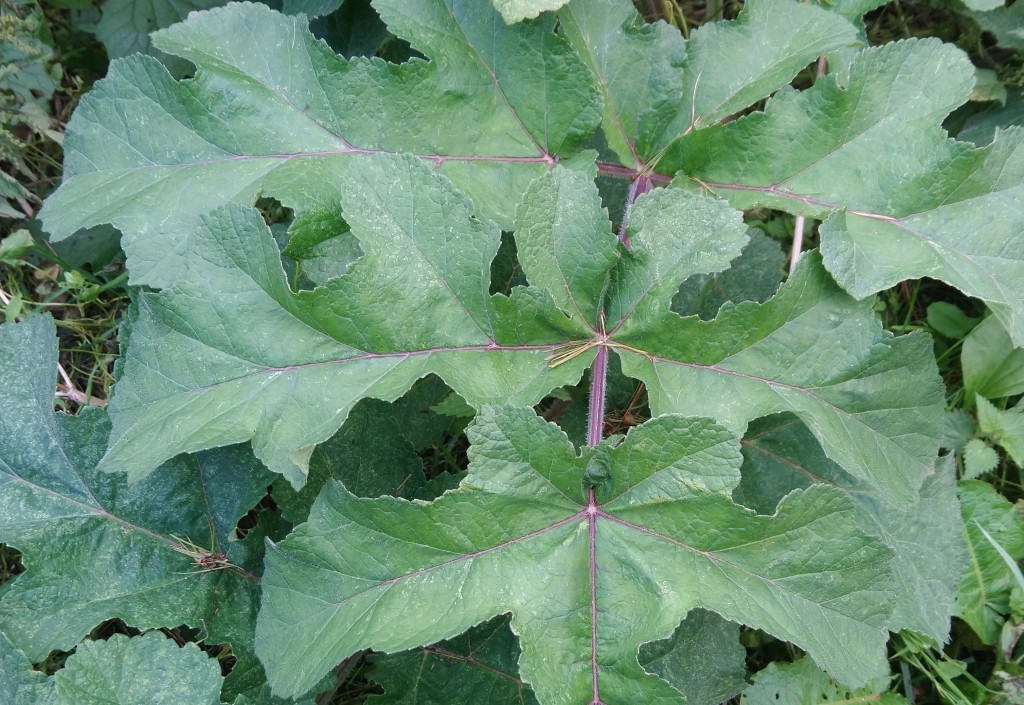
[174] Heracleum sphondylium, Hogweed
Introduction
Heracleum sphondylium, (Common) Hogweed, is one of the largest wildflowers in the family Apiaceae (formerly Umbelliferae,) generally considered an unwanted weed. It is sometimes known as Cow Parsnip.
Other members of the genus are called Hogweed, particularly Sphondylium mantegazzanium, Giant Hogweed, considered an invasive species across Europe.
Taxonomy
Kingdom – Plants
Division – Vascular Plants
Class – Angiosperms (Flowering Plants)
Order – Apiales
Family – Apiaceae
Genus – Heracleum
Scientific Name – Heracleum sphondylium
Name
Hogweed apparently comes from the pig-like smell of its flowers.
Heracleum comes via Latin from Greek Heracleios, from the mythological figure Heracles (or Hercules.) Sphondylium is the Latin for a vertebra (a bone in the backbone) from Ancient Greek spondylos. This comes from the segmented shape of the stem.
Apiaceae
There are about 4 000 species in the family Apiaceae including well over a hundred that are common in Britain.
The family name comes from the species Apium, named from the Latin for parsley or celery and it includes many cultivated herbs and vegetables such as carrot and parsnip. Its former name Umbelliferae means umbrella-bearing and relates to its flowers, which are always in an umbrella shaped inflorescence.
Description
Hogweed is a large plant with large, dark green convoluted leaves.

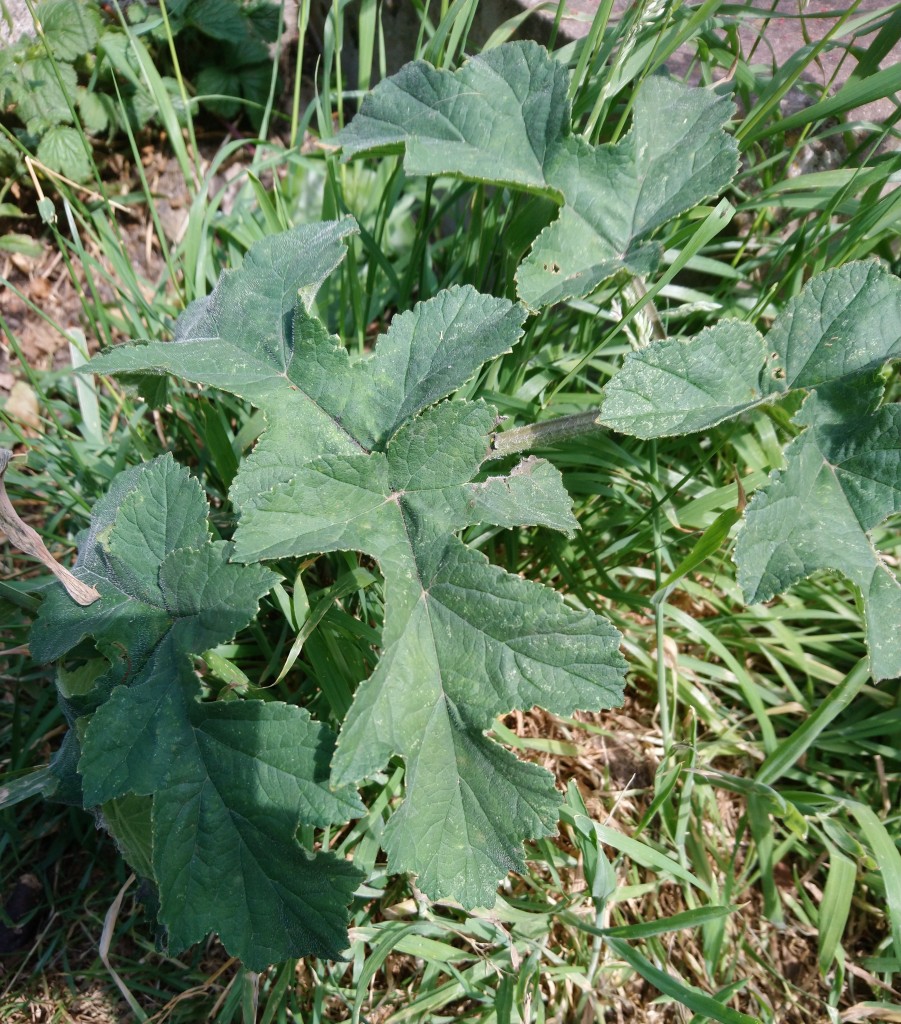

The thick stems are hairy and segmented with leaf-bearing side stems emerging at the junctions of the stems.



The flowers emerge from a large opening bulbous shape.
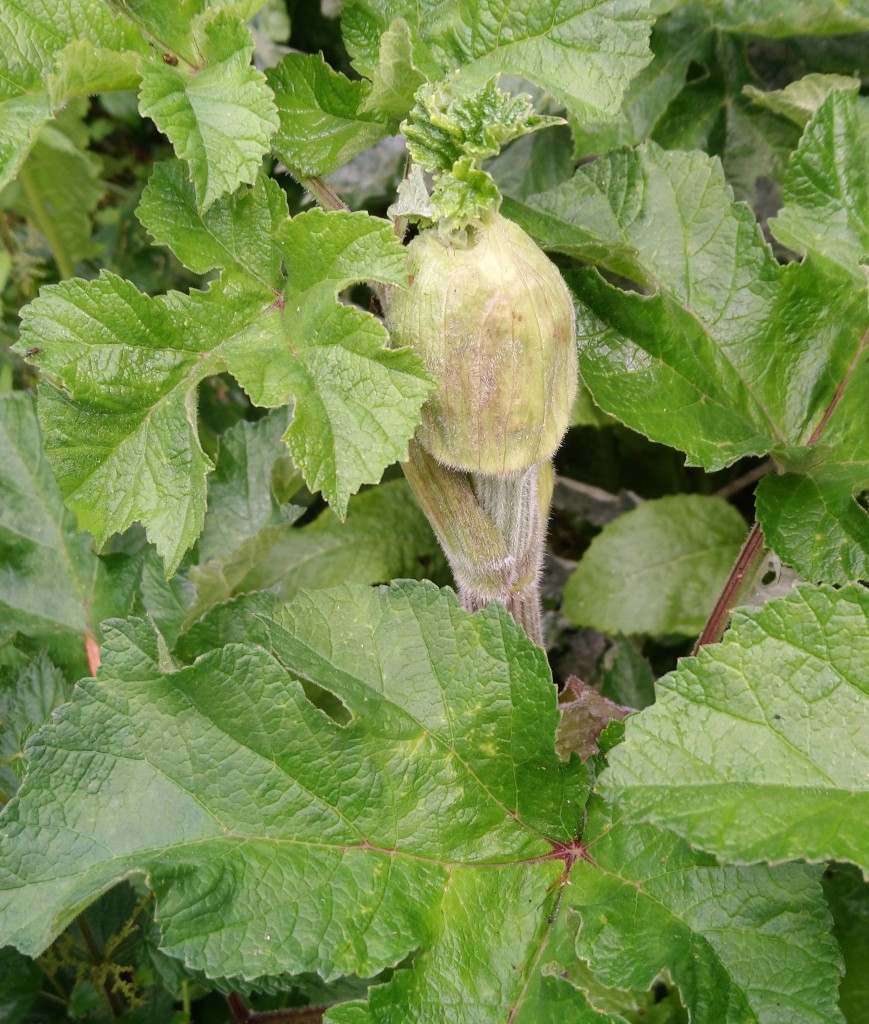
There are umbels (like small umbrella shapes) that are grouped to make a larger umbel of tiny white flowers.
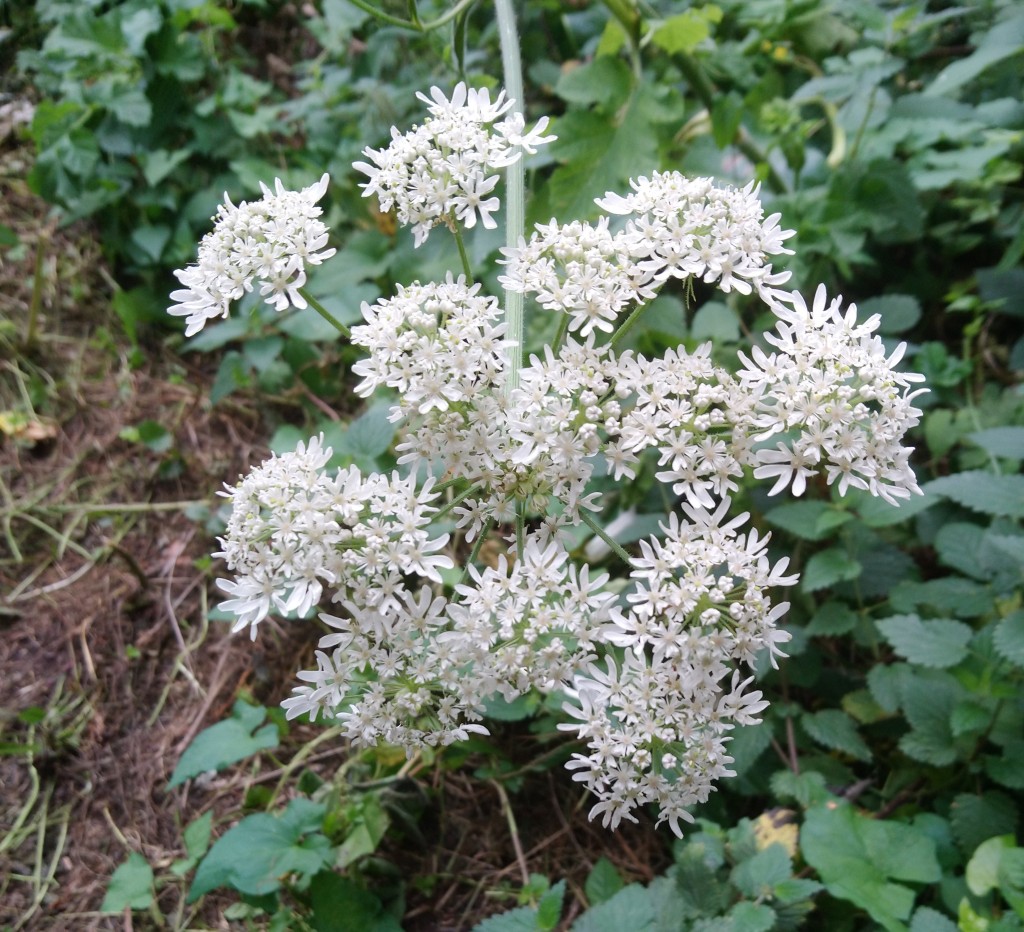



The heart shaped fruits are covered in hairs.
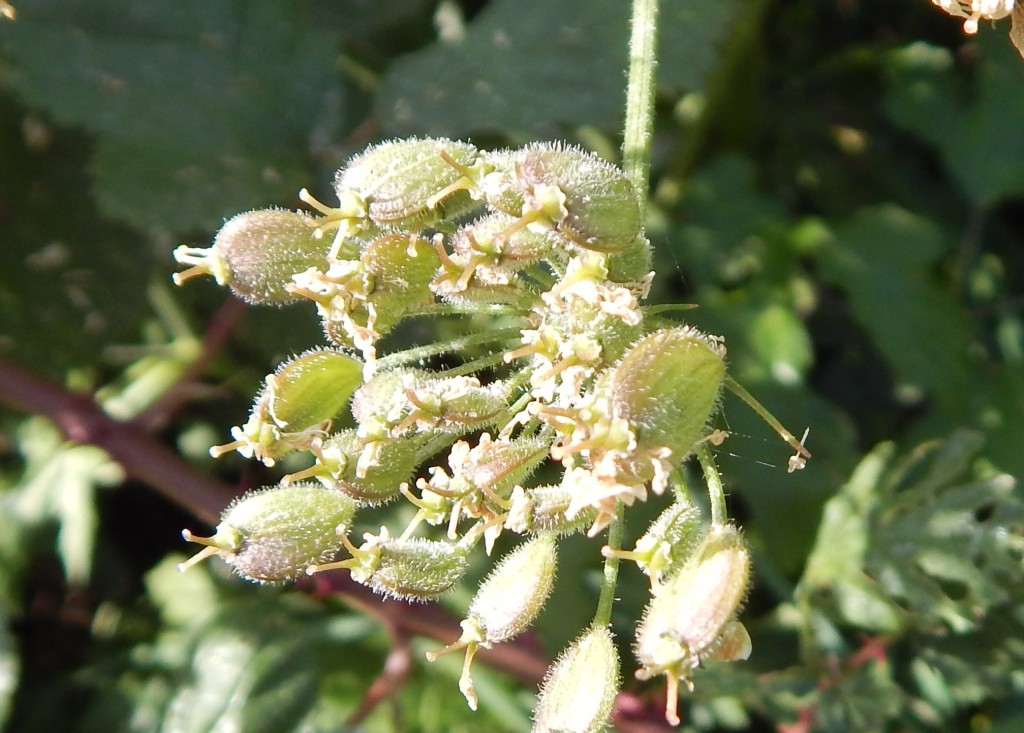
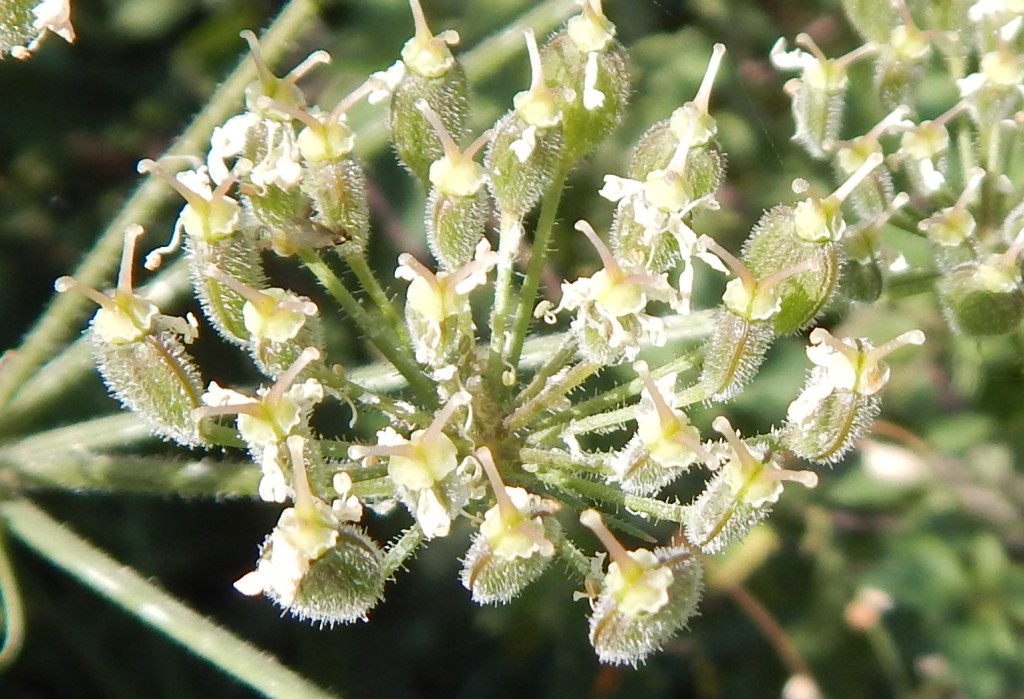

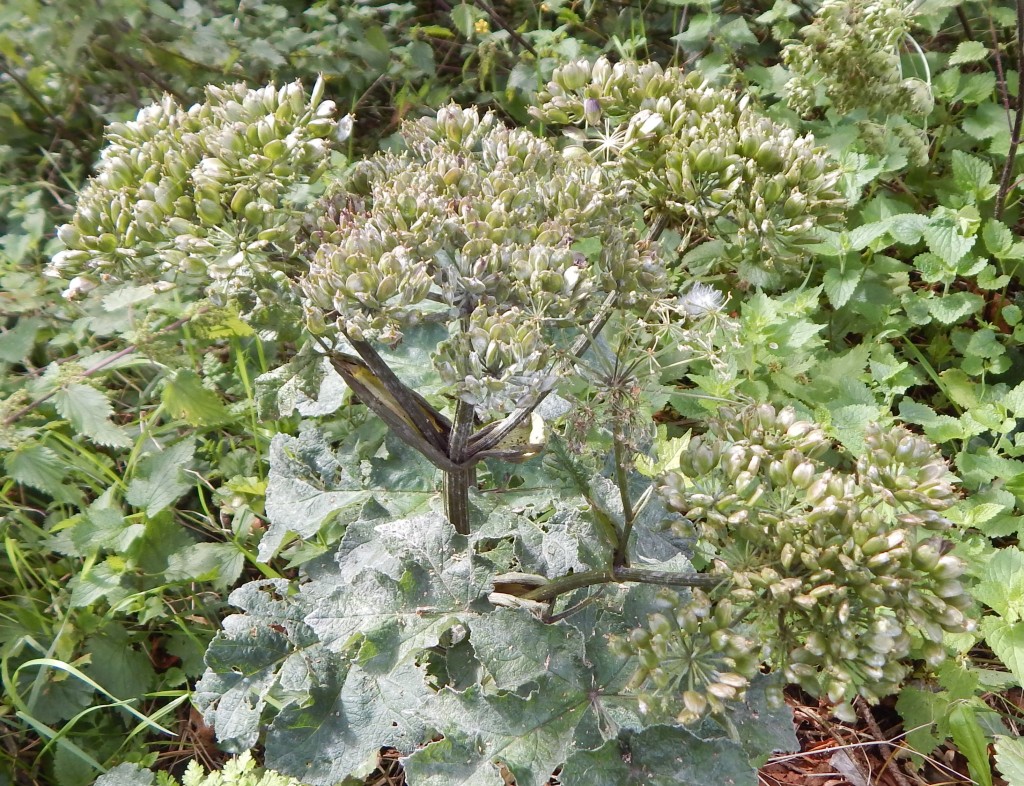
Habitat and use
Heracleum sphondylium is native to Europe, the Western half of Asia and parts of North Africa. It has been introduced to parts of North America.
It is found in meadows and grassland and other wild places such as road verges and railway embankments.
It has been used in Eastern European countries as an aphrodisiac and to treat impotence, fertility and gynaecological problems. Its seeds are also used as a dried spice much like cardamon.
A similar species, Heracleum maximum, which is found in North America, also sometimes called Cow Parsnip, is sometimes considered to be a subspecies of Heracleum Sphondylium.
Other Notes
This supposedly a perennial but I see in in meadow areas in local parks where it cut down every year.
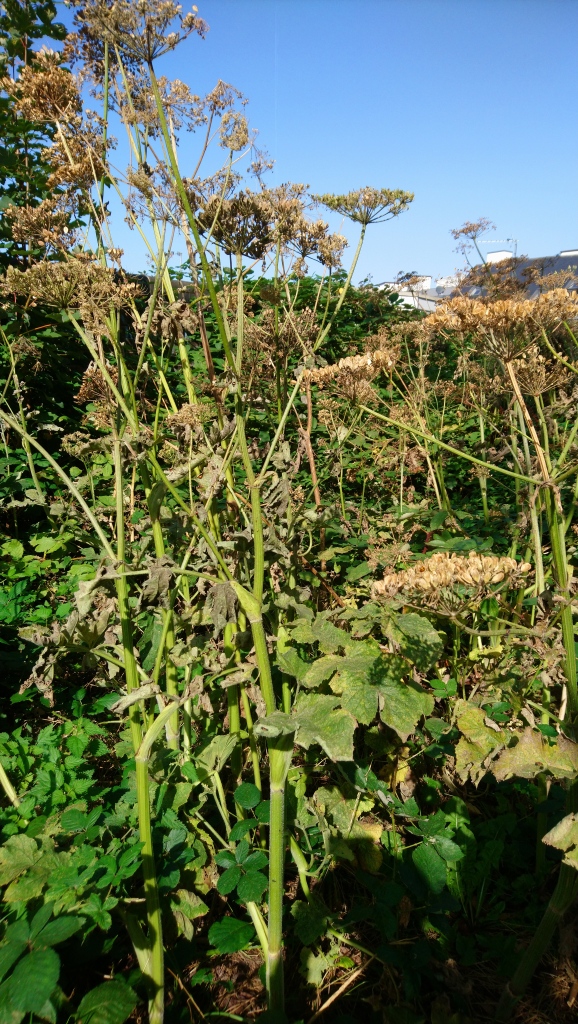
See also
There are many similar related species found in Britain. All have the same umbrella shaped swathe of white flowers and all, especially Anthriscus sylvestris, Cow Parsley, look very similar to Hogweed.
Sphondylium mantegazzanium, Giant Hogweed, is one of the three most unwanted invasive plants in the UK. See also [185] Himalayan Balsam and [298] Japanese Knotweed.

Pingback: [185] Impatiens glandulifera, Himalayan Balsam | The Species of Britain
Pingback: [300] Rhagonycha fulva, Common Red Soldier Beetle | The Species of Britain